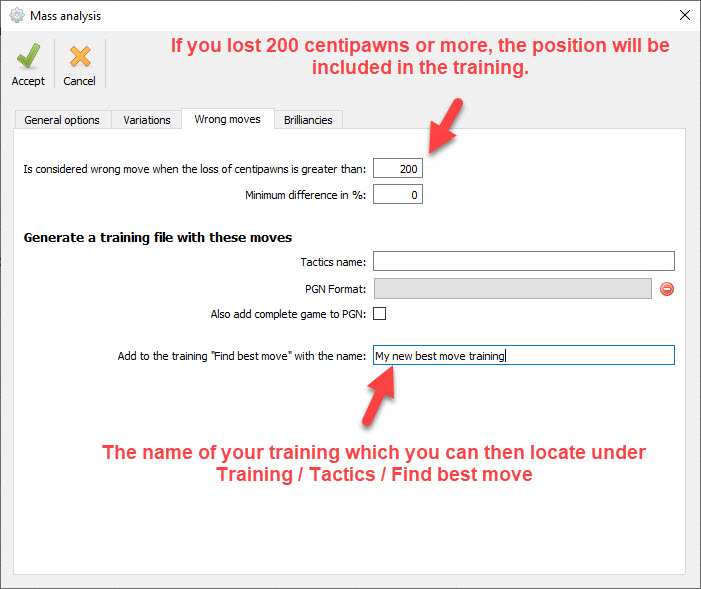Difference between revisions of "Find best move"
Jump to navigation
Jump to search
| Line 4: | Line 4: | ||
You might be familiar with the feature 'learn from your mistakes' on Lichess. However, this feature is usually limited to only one game. | You might be familiar with the feature 'learn from your mistakes' on Lichess. However, this feature is usually limited to only one game. | ||
In Lucas Chess, you you can create a [[Database|database]] with your own games. You can then either analyse a single game or use the great feature called mass analysis which let's you analyse a large number of games with an engine (see screenshot on the right on how to do that). | In Lucas Chess, you you can create a [[Database|database]] with your own games. You can then either analyse a single game or use the great feature called mass analysis which let's you analyse a large number of games with an engine (see [[File:Mass analysis for bmt.jpg|screenshot]] on the right on how to do that). | ||
[[File:Mass analysis for bmt.jpg|thumb|Creating your own best move trainings from your mistakes]] | [[File:Mass analysis for bmt.jpg|thumb|Creating your own best move trainings from your mistakes]] | ||
Revision as of 01:02, 16 October 2021
This is one of the most useful learning features of Lucas Chess - you have to find the best move for given positions (or a move that is within a threshold of the best move that you can set). And, for example, these positions can be generated from the mistakes in your own games - a great way to improve your chess.
You might be familiar with the feature 'learn from your mistakes' on Lichess. However, this feature is usually limited to only one game.
In Lucas Chess, you you can create a database with your own games. You can then either analyse a single game or use the great feature called mass analysis which let's you analyse a large number of games with an engine (see  on the right on how to do that).
on the right on how to do that).

